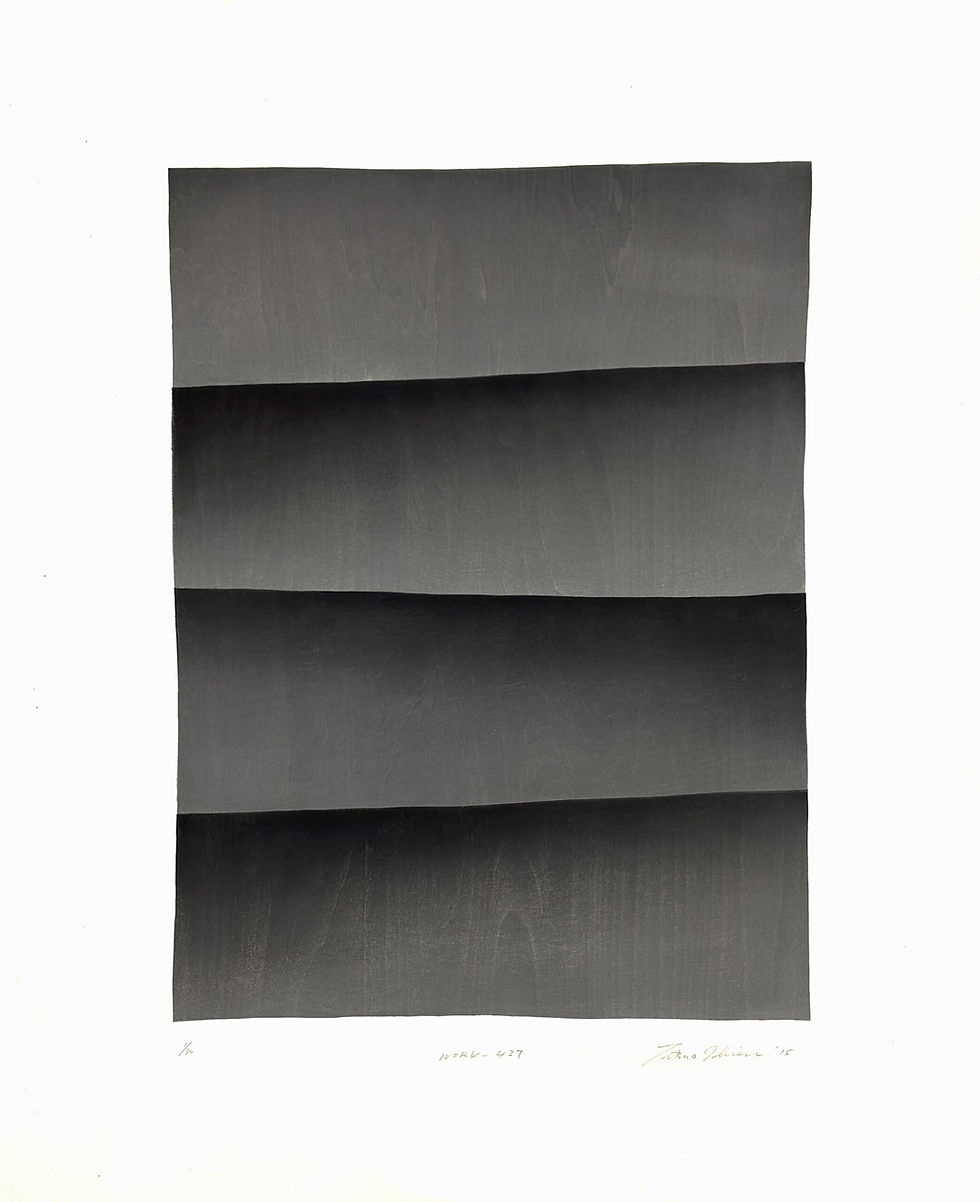IMAMURA Yoshio: Etching a Path Through Nature
- hilarytolman
.jpg/v1/fill/w_320,h_320/file.jpg)
- Sep 4, 2021
- 4 min read

I always tell people that I am a city person. I enjoy the background hum and throb (and yes, din) of New York City now and, before that, of my childhood Tokyo. Images of verdant, bucolic landscapes are lovely, but not something that I would necessarily wish to hang on my walls. So, when I first met the artist Imamura Yoshio many years ago and he told me that his work explored his feelings about the natural world, I was hesitant to take a look.
Now, I wait eagerly to see what works Imamura-san has created, and when I am alerted that new editions of his are arriving from Japan, it is always a pleasure to receive the package and study his latest work such as his most recent prints. Imamura’s etchings are crisp and sophisticated in their execution, but he demurs when receiving any kind of compliment and protests bashfully, ”I am just a country bumpkin, documenting what I see on my daily walks.” The artist says that he is celebrating nature and his relationship to it in his work, but there are no gently rolling hills or elegant arrangements of flowers to be seen. A first glance at one of his pieces reveals bits of fossils, or an old crumbling plaster wall, with flowers poking through the cracks. Application of gold and silver leaf add a contemporary gleam to the surface of his etchings. The artist has a collection of European astronomy and astrology books and has released a series of etchings based on the Western zodiac. He lives in Nagano, far from the big cities and has ample opportunity to study the moon and the skies.

During one of my last trips home to Japan, my father and I decided to drive up to Nagano and visit Imamura-san at his studio. The drive takes a few hours. The highways wound through beautiful mountain passes and wooded areas, a scenic route taking us far from metropolitan Tokyo’s urban sprawl. When we finally drove up the bumpy road to his atelier, Imamura san was waiting outside to greet us with a gigantic box of peaches by his side for us to take back to Tokyo. He explained that since he lives out in the country, he has a lot of workspace and some of his original pieces are a few meters high or wide.
His studio is laid out over two floors. First stop was the printing press area - it was no surprise to me that it was very tidy, with some sketches and photos pinned up on the wall. Imamura-san also teaches printmaking, and it was fun to see what his students were working on as well. The artist started out as a graphic designer and, even though some objects appear almost random in their placement in his work, the finished composition is always harmoniously balanced and pleasing to the eye.

Despite the incredible sophistication of his work, Imamura is full of fun and always happy to sit and share a joke, preferably over drinks. After our long drive to his atelier, we were more than ready for lunch and Imamura-san announced that he had recently discovered an excellent Italian restaurant. It may have been the fresh country air: over bowls of the most delicious spaghetti I have ever tasted, he regaled us with one humorous anecdote after another. And then, it was time for him to return to his studio, and for us to get back to Tokyo, laden down with his gift of aromatic peaches.
My sister and Imamura-san spent a year in Paris at the same time and she has many stories of how much fun she had with him, discovering Paris' Japanese and Korean restaurants and visiting Atelier Contrepoint where he was studying. During one visit to the studio they happily explored all the many print storage drawers and discovered early works by many contemporary Japanese artists who had spent some time there honing their skills.

This is how Imamura-san speaks of his work:
"During the war, my family evacuated to the mountains where my mother was born. I was born in a humble dwelling, in the midst of poverty. When I was a child, I resented the fact that we were so poor, but now, as one who lives from his art, I realize that I was fortunate. Living in the valley was like being at the bottom of a bowl. Near our little house there were fields and forests, and a little stream meandered by. The sun only showed its face for a few hours each day, and sank quickly in the evening. In the day, the forests and the stream were my only playground. At night, looking at the sky from the bottom of the bowl was like being in a massive planetarium, which sparked my interest in astronomy. And so, my childhood play times in the desolate mountains have left their mark on my heart and these images appear in my art.” To read more in Imamura-san's own words, please take a look at his English language mission statement.
Despite looking at Imamura's art from my location in midtown Manhattan, I connect to the natural world that he evokes. His intriguing compositions are not straightforward landscapes. Each viewer will find certain elements that resonate.
What do you see?


